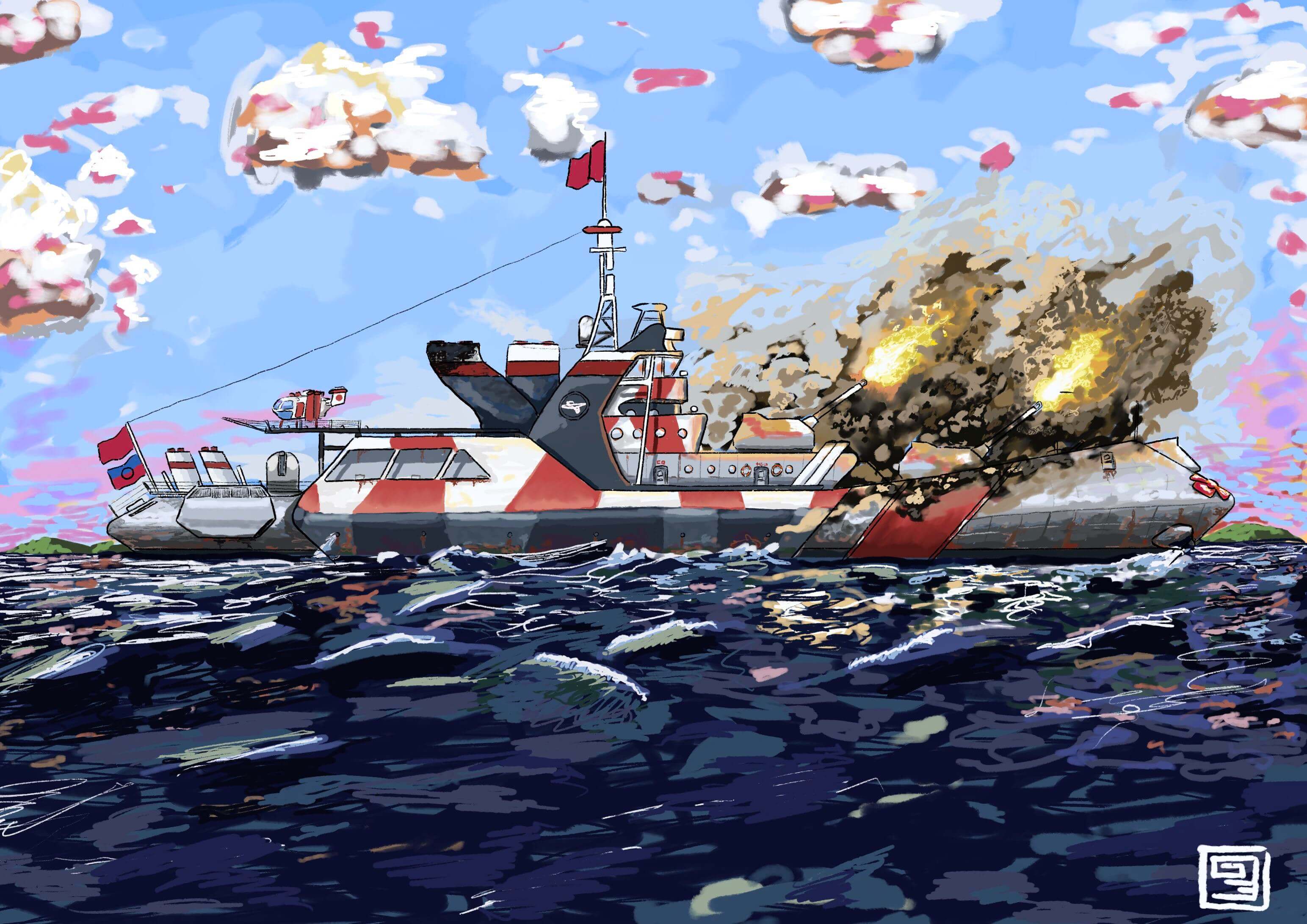NEW Story: Cocktail
Navy in Vekllei

This article is not part of Vekllei canon. It may be old, obsolete or just a bit of fun.
There are not many warships in the world today that are distinctive as the serpentine-funnelled, semi-tumblehome hull of the Sundress-class supercruisers. For a country that prides itself on ‘petticoat society’, it is only suitable that Vekllei continues to pioneer the ‘dazzle’ warpaint in her navy.
The most recent stock of Navy ships are all named after women’s clothes, to emphasise Vekllei’s spiritual understanding of gender in industrial society and also as a sarcastic nominer. What American or Chinese sailor wants to be defeated in naval combat by a supercruiser named after a sundress? There is humour about it. You do not see that in many chambers of navy high command.
Two 10 inch naval cannons sit on the bow, and use large magazines that give a maximum fire rate of thirty shots a minute. A spiritual successor to the battleships of yore, supercruisers (a light battlecruiser designed for speed and use in shallow water), are designed for naval gunfire support using these cannons. The ship is also armed with anti-submarine and anti-fighter capabilities as needed. With prolonged shooting the ship is soon absorbed into a cloud of smoke and gunpowder.
The distinctive serpentine auxiliary funnel betrays the Sundress’s nuclear secret — an analog diesel engine sits alongside the standard light salt reactor, to immediately take over should the advanced electrics of the ship be disrupted by the electromagnetic effects of a nuclear blast. Because of recent advances in thermal detection, both water vapour from the reactor and smoke from the diesel engine are cooled with seawater in segregated loops, hence the two funnels for two engines.
The navy forms a large part of the island nation’s military consciousness, and so ships are painted unconventionally as part of Vekllei Semaphore (a language within Vekllei of flags, colour and paints) for presentation in military parades. The Festival of the Sea, spanning two weeks in October, concludes with a detonation of a nuclear device offshore.
The sweeping curves of the armoured hull and bridge are common in all the world’s navies these days, as the futurism of yesterday creeps closer to today.